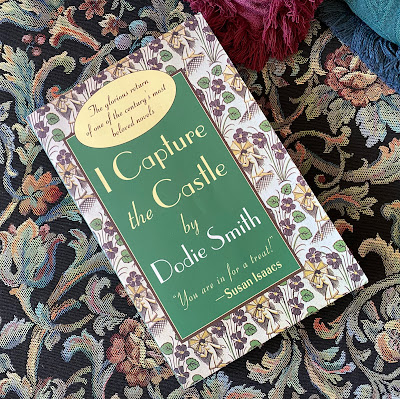“I believe in some blending of hope and sunshine sweetening the worst lots. I believe that this life is not all; neither the beginning nor the end. I believe while I tremble; I trust while I weep.”
― Charlotte Bronte, Villette
Charlotte Brontë was born on April 21st of 1816 in Market Street, Thornton, west of Bradford in the West Riding of Yorkshire to an Irish Anglican clergyman, Patrick Brontë and his wife, Maria.
In 1820 when she was 4 years old, Charlotte’s family moved to Haworth on the edge of the moors in West Yorkshire, England, where her father was appointed perpetual curate of St. Michael and All Angels Church. The moors and surrounding Yorkshire locale thereafter became highly influential to Charlotte’s development as she grew up and her subsequent writing was filled with their beauty and stark isolation. All three author sisters - Charlotte, Emily & Anne - drew heavily from their surroundings and the loneliness of the landscape featured as a haunting presence in all of their works.
It seemed that death was a close companion of the Brontë family throughout Charlotte’s life with the loss of their mother in 1821 and the two oldest daughters, Maria and Elizabeth in 1825, who both died of tuberculosis while still children.
After Charlotte’s mother passed away in 1821, their Aunt Elizabeth came to oversee the children and house, but even so, it appears that the Brontë children spent a great deal of time alone together and began to create stories and characters in their seclusiveness.
“But solitude is sadness.'
'Yes; it is sadness. Life, however, has worse than that. Deeper than melancholy lies heart-break.”
― Charlotte Brontë, Villette
All of the Brontë children were avid readers and all retreated into a rich fantasy life which fed into their writing - whether poetry or prose. Charlotte drew heavily on life experiences of her own and wove them into her works - whether it was the damp & dismal conditions at the Clergy Daughters’ School at Cowan Bridge, her brief stints as a governess or her teaching role at a school.
Charlotte was the eldest to survive to adulthood out of the five Brontë daughters and brother, Branwell, and she lived the longest out of all six children. She remained at the parsonage at Haworth with the elderly Patrick Brontë until she was married at 38 years old to Arthur Bell Nichols, her father’s curate.
Within nine months, however, she had died due to complications in pregnancy. Her death was reported as being tuberculosis - the family illness - but more recent medical analysis has determined that it was hyperemesis gravidarum, a condition which is treatable today.
We all have our own perceptions of the Brontë sisters; Charlotte, Emily and Anne. Their works are some of the most read, debated and beloved in literature. For three fairly secluded young women, their writing was deep, involved, psychological and worldly.
“If life be a war, it seemed my destiny to conduct it single-handed.”
― Charlotte Bronte, Villette
Villette - Charlotte’s third published work and the last published during her lifetime - was originally published in 1853 in 3 volumes. Like Jane Eyre, Villette is a psychologically complex workalthough it also follows threads of Gothic romance, so popular at the time. Protagonist, Lucy Snow is a memorable character and is one of the most honest heroines of the literary time.
There is much about the storyline that bears a heavy resemblance to a period of Charlotte’s own life and her experiences in Brussels, Belgium where Charlotte and Emily were both enrolled in a boarding school. In exchange for board and tuition, Charlotte taught English and Emily music.
With major themes of intense isolation, social repression and internal conflict, the work Villette bears many similarities to Charlotte’s life and her time spent in Belgium. She and Emily were foreigners, Protestant instead of Catholic like others at the school and Charlotte apparently struggled with an attraction for the married head of the school, Constantin Héger.
Many readers view Villette as being an even better novel than Jane Eyre - but has it stood the test of time and popularity as such?
No mockery in this world ever sounds to me so hollow as that of being told to cultivate happiness. What does such advice mean? Happiness is not a potato, to be planted in mould, and tilled with manure. Happiness is a glory shining far down upon us out of Heaven. She is a divine dew which the soul, on certain of its summer mornings, feels dropping upon it from the amaranth bloom and golden fruitage of Paradise.
― Charlotte Bronte, Villette




























